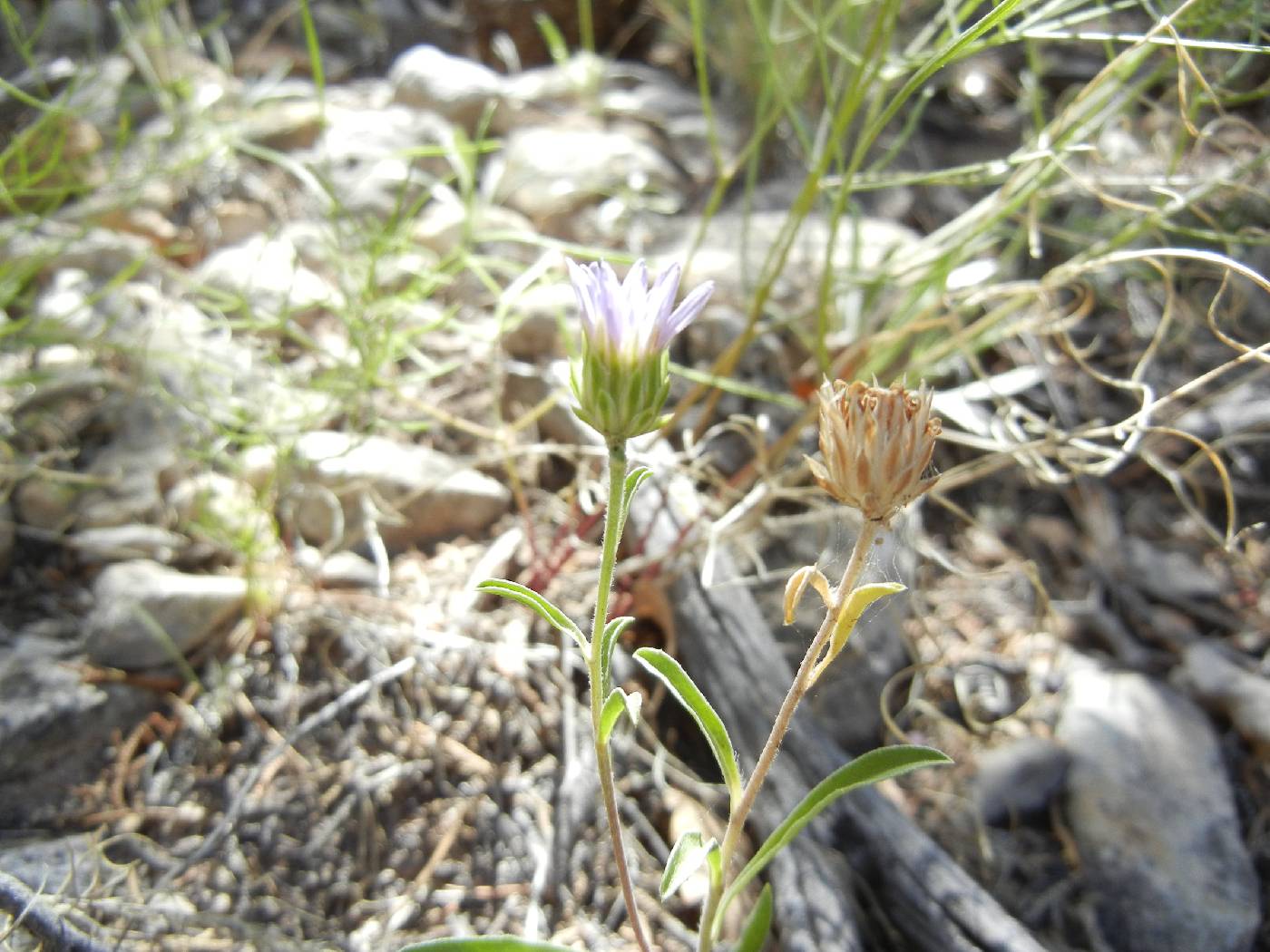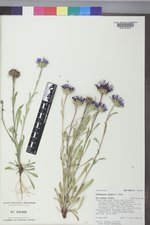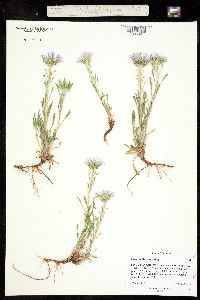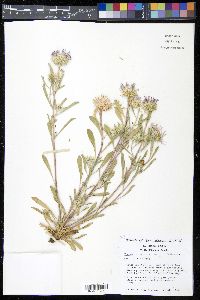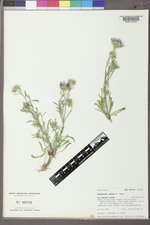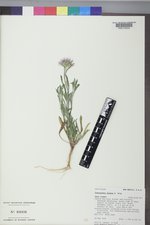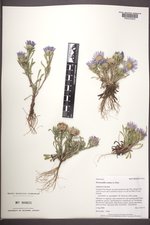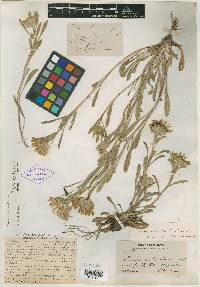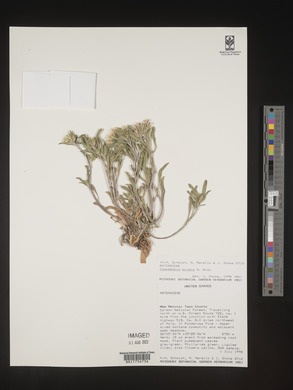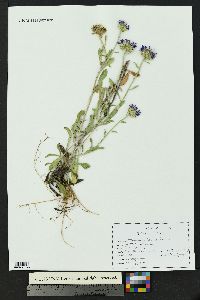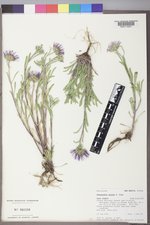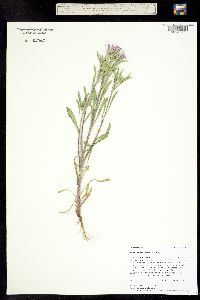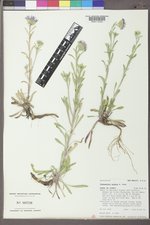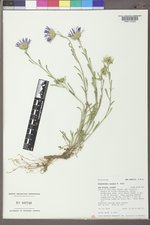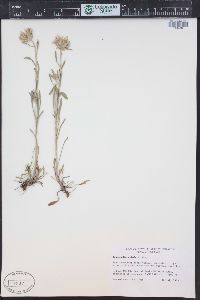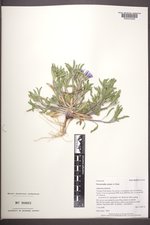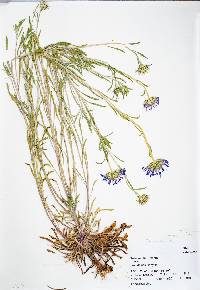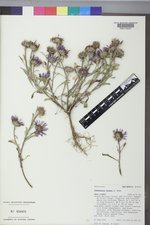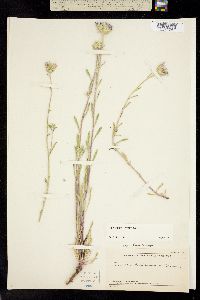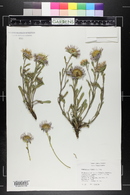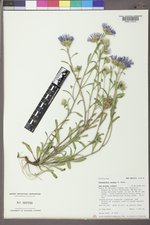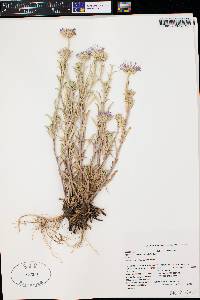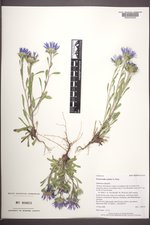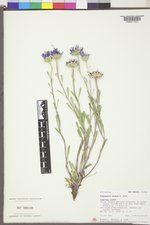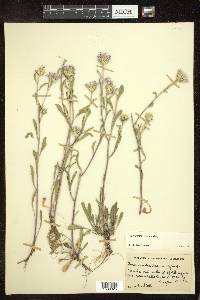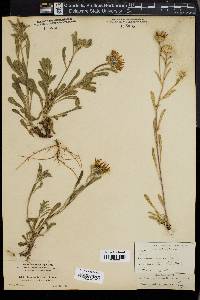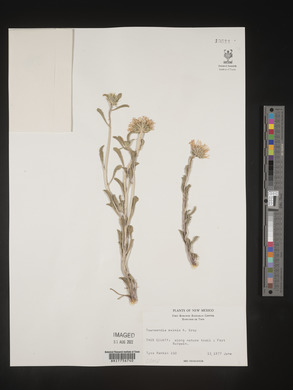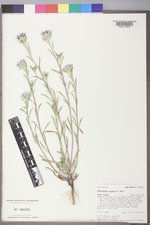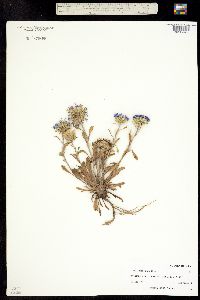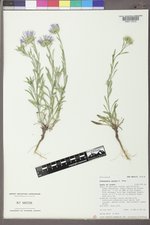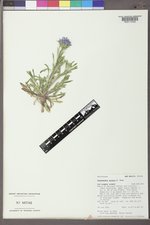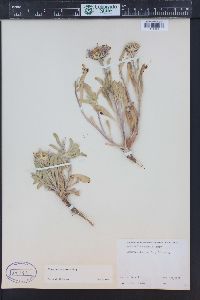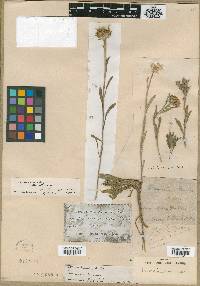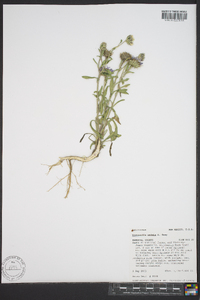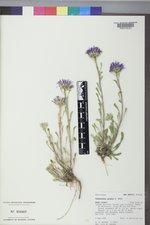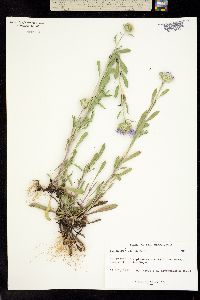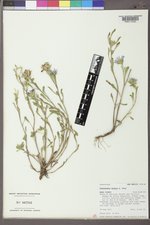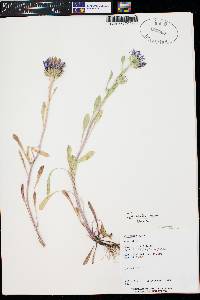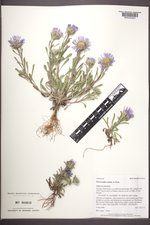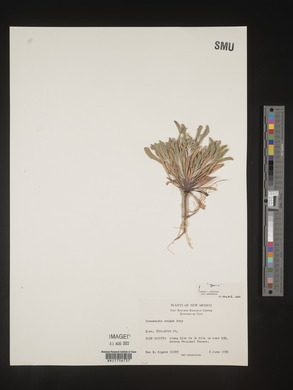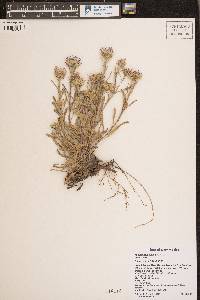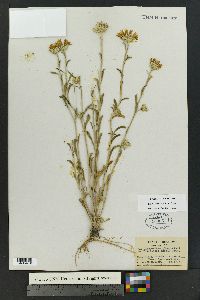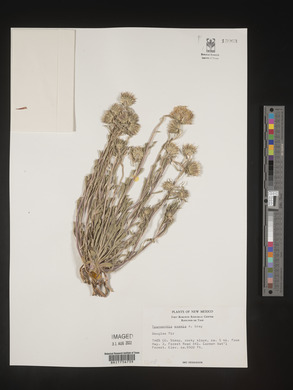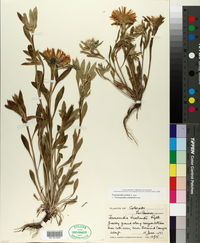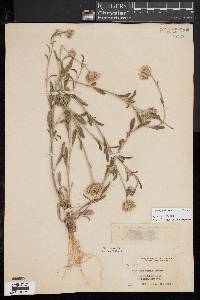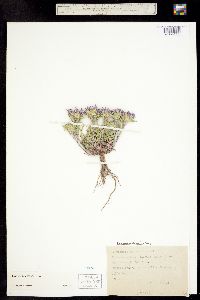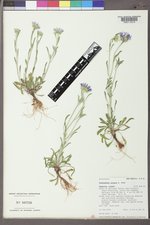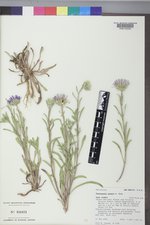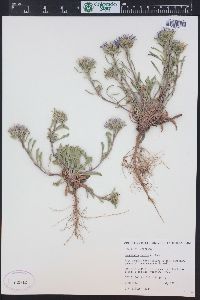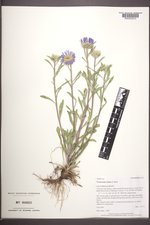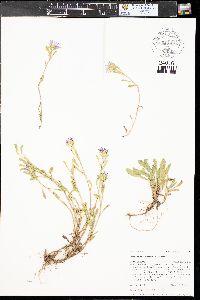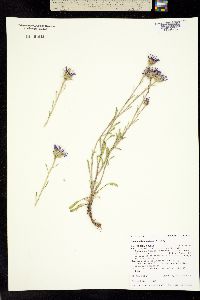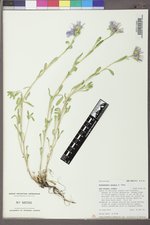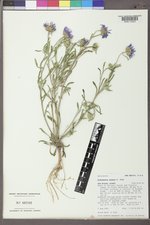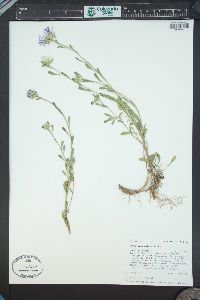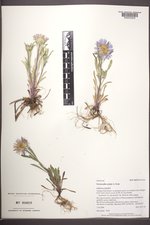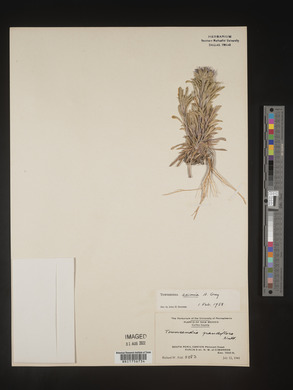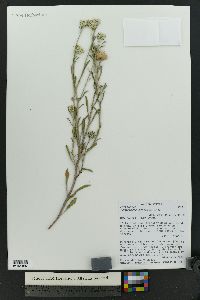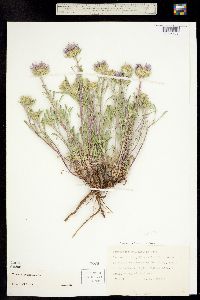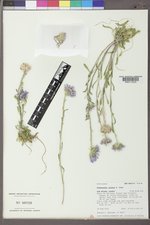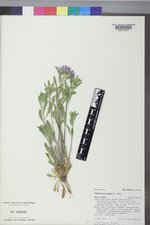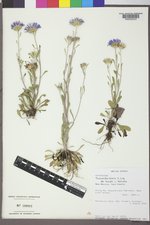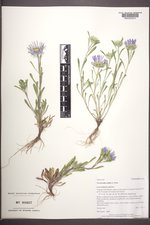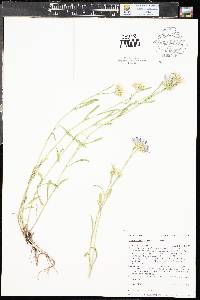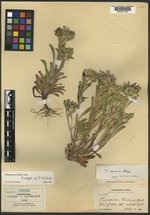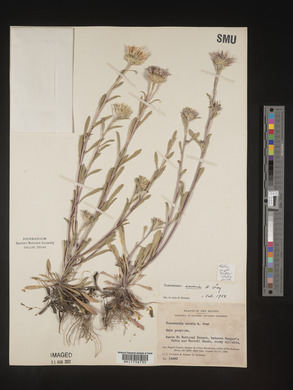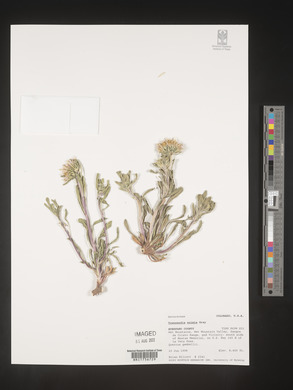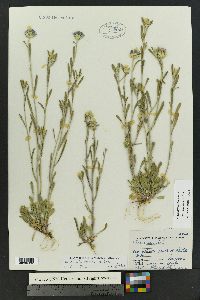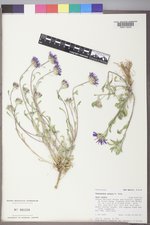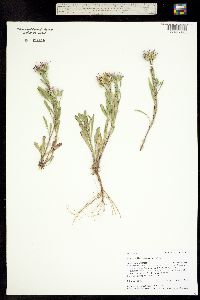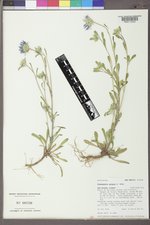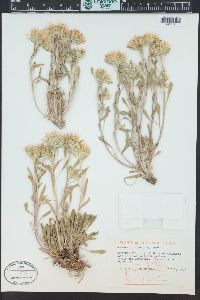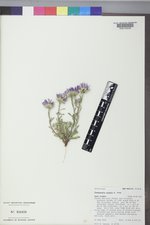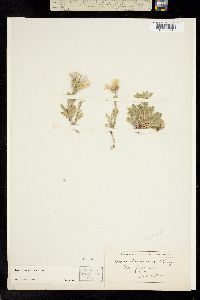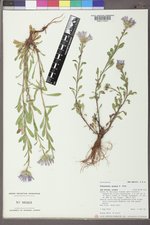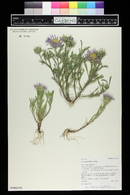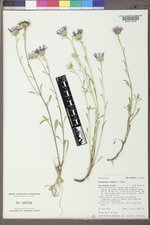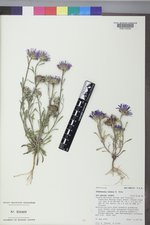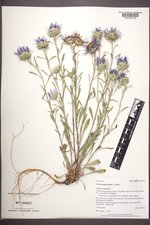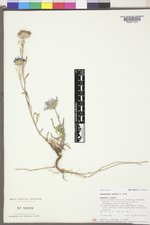
|
|
|
|
Family: Asteraceae
Rocky Mountain Townsend Daisy
[Townsendia vreelandii Rydb.] |
Biennials or perennials, 6-15(-30+) cm (sometimes rhizomatous). Stems ± erect; internodes 6-8(-25) mm, ± strigose. Leaves basal and cauline, blades spatulate to oblanceolate, 15-60(-120+) × 2-6(-10) mm (margins strigoso-ciliate), faces usually glabrous, sometimes sparsely strigillose. Heads at tips of ± leafy stems. Involucres hemispheric or broader, (8-)12-25+ mm diam. Phyllaries (30-)60-80+ in (4-)5-6+ series, the longer ± lanceolate, (7-)12-13+ mm (l/w = 3-5), apices acute to attenuate (most hard, apiculate), abaxial faces sparsely strigillose or glabrous. Ray florets 15-55+; corollas usually blue adaxially, laminae 12-20 mm, glabrous abaxially. Disc florets (60-)100-150+; corollas (3.5-)4-5+ mm. Cypselae 3-4+ mm, faces ± hairy, hair tips forked or glochidiform; pappi persistent; on ray cypselae each a corona 0.1-0.5 mm; on disc cypselae each of 8-12+ lanceolate scales 0.5-1 mm plus 1-2+ subulate to setiform scales 1-4 mm. Flowering (May-)Jul-Aug(-Oct). Gravelly banks, canyon walls, with junipers, pinyons, and yellow pines; (1900-)2100-2500(-3300) m; Colo., N.Mex. Allred and Ivey 2012, FNA 2006, Harrington 1954 Duration: Perennial Nativity: Native Lifeform: Forb/Herb General: Biennial to perennial herbs, 6-30 cm tall, from a woody caudex, sometimes with rhizomes; stems usually 2 or more per plant, ascending to erect, unbranched or sparingly branched, strigose. Leaves: In dense basal clusters and alternate along the stems; blades spatulate to oblanceolate, 2-6 cm long and 2-6 mm wide, nearly glabrous but sometimes appressed-hairy on veins and margins. Flowers: Flower heads showy, radiate, blue-purple with yellow centers, located at tips of more or less leafy stems; involucres hemispheric or broader, 1-3 cm diameter, the bracts (phyllaries) in several graduated series, lanceolate, to about 1 cm long, with rigidly acuminate tips, the outer surfaces sparsely strigillose or glabrous; ray florets 15-55 or more per flower head, the laminae (ray petals) 1-2 cm long, blue or purple; disc florets 60-150 or more per flower head, yellow. Fruits: Achenes 3-4 mm long, covered with forked hairs; ray achenes topped with a crown of minute scales less than 0.5 mm long; disc achenes with a similar crown of minute scales plus 1 or 2 subulate to setiform scales, 1-4 mm long. Ecology: Found on gravelly banks and canyon walls, in pinyon-juniper and mixed conifer woodlands, from 6,500-10,500 ft (1981-3200 m); flowers May-October (most commonly July-Aug). Distribution: northern and central mountains in NM; neighboring south-central CO Notes: T. eximia is endemic to a fairly limited area in north-central New Mexico and extreme south-central Colorado; however it appears to be secure because is not on any watch lists and is even cultivated by some high-elevation horticulturists. The species appears quite different from many other Townsendia spp because it is upright with stems up to one foot tall, and has blue-purple ray flowers (many other Townsendia are low-growing and have white to pinkish ray flowers). It has the distinctive involucre of the Townsendia genus, however, with several rows of phyllaries, the lengths well graduated so that the outer phyllaries are quite a bit shorter than the inner, and the phyllaries are green with scarious (tan and papery), finely toothed edges. In contrast, Erigeron spp usually have several rows of phyllaries that are all about the same length (not graduated), and the Aster group (Symphyotrichum, Machaeranthera, etc) generally have several series of well-graduated phyllaries, all with distinct dark green spots near the tips. The pappus is also a distinguishing factor: Aster achenes have a pappus of capillary bristles, while Townsendia achenes have a combination of scales and rigid bristles. Ethnobotany: Unknown, but other species in the genus have uses. Etymology: Townsendia is named for David Townsend (1787-1858) an American amateur botanist; eximia is Latin for special or remarkable. Synonyms: Townsendia vreelandii Editor: AHazelton 2017 |
This project was made possible in part by the Institute of Museum and Library Services [MG-70-19-0057-19].
Powered by Symbiota

